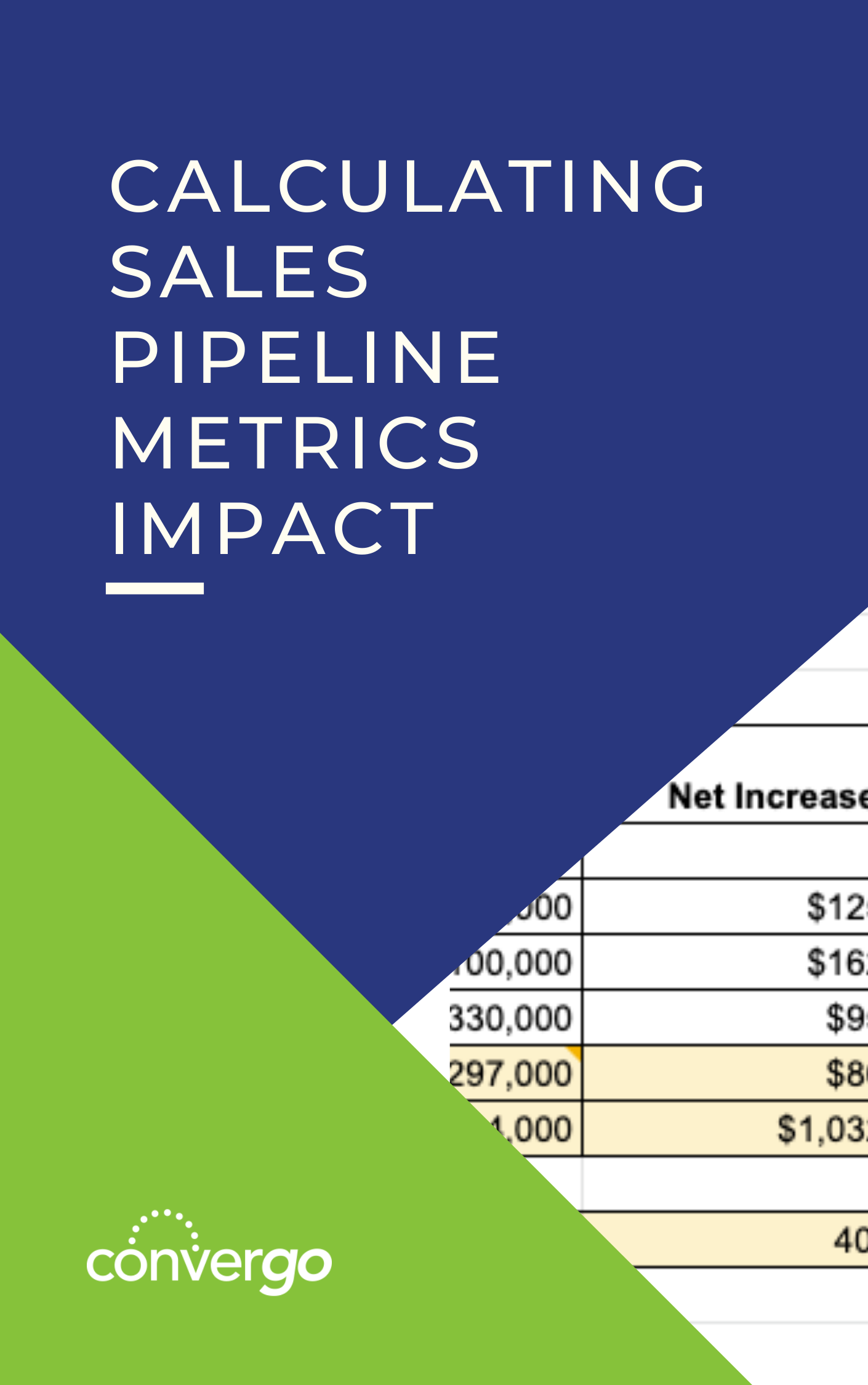
by Bill Poole | Jan 31, 2022 | Sales, Strategy
When faced with a price increase, clients may feel backed into a corner with only two options. One option is to take the price increase, sacrificing somewhere else in their budget. The other option is to stop buying from you and either forego the service or go through the hassle of finding another vendor.
Price increases typically create a “yes” or “no” scenario. Instead, what if you offered a third fallback option that was a scaled back version of your service?
Your fallback option could be lower-cost package with fewer benefits for your clients that are not willing to accept the price increase. You win because you keep the client. The client wins because they get to save money while keeping pieces of your offering.
The good news is that your fallback option not only can preserve revenue, it may also be able to preserve your profits. Done correctly, it may also create a strategy to go after your competition and get marketshare.
Here are a few things to consider as you create your fallback option.
Ask What Is Essential To Your Customers
When I was a kid most of the cars we had growing up had an AM radio, bench seats, and windows that you rolled down by hand. Now my car has an incredible surround-sound stereo system, multi-position heated buckets seats, and automatic windows. As much as I like these amenities, the reality is that I mainly need my car to get me to the airport and back. If cost-cutting were necessary, I could live without the fancy things.
Think about your products and services through the eyes of your customers—especially the ones who tend to be price-sensitive. What is most important to them? What can they not live without? What challenges are they facing that your offering alleviates?
Bob Moesta and Clay Christensen believe that buyers don’t buy products and services. Instead, they hire them for a “job to be done.” In the case of my car, I mainly hired it to get from point A to point B. Sure, I also hired it to provide some comfort, enjoyment, and status. But if times are tight what I mainly need is transportation.
Think about your offerings. What “job to be done” did your customers have that motivated them to purchase from you? What is essential and what is optional?
Your fallback option should include the essentials. In fact, you might even call it your “essentials” package. Strip away the surround sound, heated seats, and automatic windows. Offer a lower-cost option that still gets the job done. This allows you to keep your client while becoming a partner that also helps them achieve the goal of reducing their costs instead of raising them.
Consider You How You Can Preserve Your Profits
Just because you offer a fallback option with a lower cost does not necessarily mean that you need to lower your profits. Look for ways to package your “essentials” option in a way that has the same profit as your full offering.
Once you create your “essentials” bundle look at the cost of the product and/or service.
Then, take the actual dollar amount of the margin you had on your full offering and add it to the essentials offering. If you use this as the price you can protect your profit.
Can you always protect your profits? No. However, sometimes you might find a way to even raise your profits.
Create a Campaign To Add Back Margins
For the customers that choose your fallback option instead of a price increase, build a marketing campaign that allows them to add back some of the options. You might let some time pass. Then start dripping out marketing that lets them add in features. Make it easy to bring these back in.
For example, my TV provider recently raised their rates. If they had a fallback option, I might have opted for fewer channels to save some money. Over time, the provider would be smart to begin offering some of the channels I lost for an incremental increase in monthly fees.
You might be able to do the same. After some time has passed, launch a marketing campaign that invites clients to incrementally upgrade their experience with your company.
Go After Your Competition
As you create your fallback option you may discover a new offering that could attract customers from your competitors. Chances are your competitors are raising prices. Your “essentials” offering could be the thing that lures them away. Once you bring them on board you can expand the relationship.

by Bill Poole | Jan 31, 2022 | Strategy
Increasing costs require many businesses to raise prices. Rather than just raise prices, what if you could take a strategic approach to cost increases? Following are ideas to get you thinking creatively about how you could handle this challenging situation.
First, consider if you are a core supplier or a vendor.
You are a core supplier if you are a key partner to your customers. You show up on their profit and loss statement as a cost of goods sold. Your offering is key to their success. An example might be a materials supplier to a manufacturer. You are critical to their business operations but you might also sell a commodity that is easy to replace.
You are a vendor if you provide something that is not a core part of the business. For example, you provide office equipment or bookkeeping service. You show up on their profit and loss statement as an overhead expense. In some cases, your offering may be optional or easily replaced. It’s not that your services are not important to your customers. It’s just that they think about you as an expense rather than a cost.
Core suppliers and second-tier vendors may need to approach the price increase conversation differently. Here are some ideas.
Core Suppliers
Here are some strategies that can work for high-relationship businesses where you are a core supplier to your customers.
1. Make It a Business Conversation
Rather than just send out an email or letter, use this as an opportunity to have a business conversation with your customers. Be empathetic. Ask about their business challenges. Be open about how the current business environment has affected your operations. Discuss how you made the decision increase costs to maintain quality rather than sacrifice quality. Explain how you have done this by increasing wages, taking measures to alleviate supply chain issues. You could also share some long-term vision about how you are working to create operational efficiencies that will
2. Discuss Concessions in Exchange For Commitments
When key clients push back on price increases, use this as an opportunity to offer price concessions in exchange for commitment. For example, you might agree to continue previous pricing levels (or a level in between current pricing and the price increase) in exchange for a volume commitment over the next year. Be prepared for this by creating pricing tiers based on volume commitments.
3. Bundle Profitable Services
Similar to the commitment idea above, you could offer a bundle that includes profitable services. If you sell both products and services, consider ways to offer the same product price if the customer bundles in high-margin services. If you don’t have a high-margin service to go with your products, you might consider services you could add. This could open up new lines of profitable revenue.
4. Add Temporary Fees Instead of Raising Prices
Rather than raise prices you can add or raise fees for your products. These could include shipping and/or handling, configuration, or installation. If you think your cost increases will be temporary, consider adding a temporary fee on orders.
Vendors
If you show up as an expense on your customer’s profit and loss statement here are some strategies you can use if you are an overhead expense to your clients.
1. Outsourcing Strategies
One way companies reduce overhead expenses is by outsourcing non-core functions. While your pricing for your products may go up, there may be a way that you can take over the entire function for a client. One recent example is QuickBooks. In addition to providing software, they now provide bookkeeping services. Their customers now have the option to outsource all of their book keeping to one vendor.
2. Vendor Consolidation
Could you provide more products and services to your customer? Another expense reduction strategy is vendor consolidation. From the customer’s perspective, fewer vendors to manage. You might consider offsetting the price increase for customers that are willing to bring more lines of business to you.
3. Rethink Your Offers
The hybrid work environment seems to be here to stay in many industries. Consider how you could re-package your offer to support the mix of people working at the office and working from home. If you sell to businesses, listen to the needs of your current customers. If you sell to individuals, their needs have likely changed as well. This is a perfect opportunity to realign your products and services around their needs. In the process, you can reconfigure pricing to account for cost increases.
4. Resize Your Options
This is a playbook from the food industry. To offset rising prices, some food providers are keeping their price the same but reducing the amount of product. Could you do the same thing without affecting your customer? Maybe there is a way to repackage what you do so that you lower your costs but increase value.
Whether you are a core supplier or a second-tier vendor, there are many creative ways you can approach price increases. In the process you might even discover ways to reinvent your offerings that make you more valuable to your customers while increasing your profits.

by Bill Poole | Nov 29, 2021 | Strategy
You might be wondering when it’s the right time to expand your marketing team. With a refined sales and marketing process, it can be pretty transparent on what you should be hiring for. Being particular about which role to fulfill isn’t necessarily a bad thing. Taking those initial steps to figure out what exactly is lacking in your marketing organization can help ensure you are hiring for the right role that will help you to achieve your overall business goals. Without this clarification, you run the risk of coming up with great strategies without the ability to execute or having an excellent team ready to work, but with no strategy in mind.
Start by breaking it down. There are four potential perspectives that your marketing team may need to zero in on:
- Strategic perspective
- Management experience
- Content creation
- Execution
Strategy
When that strategy is implemented, it’s all hands on deck; one aspect can’t work without the other. Now is the time to be truly honest with yourself. What does “good work” look like to you? What can or should we be doing to achieve business goals? A big part of what type of marketing person you choose to come on board will be dependent on if you have a strategy in place. It’s also important to consider where your team may need rounding out to actually execute on the strategy effectively.
Management
We have a strategic process in place, great! Now, who will be on top of it? Managing a marketing strategy is a consistent role. Being on top of the plan and knowing where it’s going allows for your other team members to work more efficiently. Think about what the end game is. Once you have that strategy and team implemented, it is key to appoint someone to manage that strategy and team. It’s crucial to have someone that is constantly making sure deadlines are being met, details are added and processes are being completed.
Content Creation
Working on great content comes as a team effort. Brainstorming and going back and forth within the team is one of the best ways to explore new ideas. Getting excited about new projects is one of the fun parts when it comes to the marketing process. Content creation ideally should be done in-house, but subject matter experts may not have the time or skills to write or produce content regularly. If that’s the case, then outsourcing content creation is an option as it can allow for faster turn around and other perspectives. However, when going the outsourcing route, it’s important to remember that it can come with a hefty price tag.
Execution
Depending on what the strategy calls for your business, you will need specific skills to help achieve your goals. Outsourcing can be a great option for this depending on what your marketing strategy is. You may need graphic design help, web developers, SEO professionals or general marketing coordinators for the day to day.
In this world, nothing is for certain. Making sure your business is staffed with talented and hard working people can only lead to great things. Growing your marketing team invites new ideas to push along your company’s ambitions, but you want to make sure you are making the right hire for the needs of your company.

by Bill Poole | Oct 11, 2021 | Strategy
Every business shares similar struggles: there aren’t enough hours in the day, a limited marketing budget, maybe only a few sales team members. It’s important to filter through clients and projects to ensure that goals are being met as efficiently as possible. Therefore, it’s important that your sales and marketing teams gets focused on making sure you are bringing in your ideal clients.
In today’s discussion, we’re talking about using filtering criteria to ensure all of the focus is on our ideal client.
There are two ways to think about filtering your clients as they move through your funnel: Proactively and Reactively.
Proactive
When we talk about proactiveness, we want to look at which companies that we should target. If you know your ideal clients, it makes it easier to focus your sales energy on them. One way to focus is to compile a list of local businesses. You should do some preliminary research to which companies you should be reaching out to — the types of clients that are more likely to engage in your services and foster a healthy working relationship.
When thinking “proactively”, you might want to ask yourself these questions:
- Who or what companies should we be proactively reaching out to?
- How can we focus down and work efficiently off of our prospect list?
- Are our marketing processes designed to target ideal clients?
Reactive
When we talk about being reactive, it’s more than just someone picking up the phone or clicking a link. Although this interaction is the ultimate goal, it’s more about quality than quantity. We want to make sure that the people who are calling or visiting the website are a viable option to continue with sales’ and marketing’s, and ultimately operations’ efforts. Having forms to filter out the less compatible prospects can help us regain focus on what the actual mission is — to serve ideal clients. To make reactive filtering function best, it is important to be creating and promoting content that those ideal clients would want to interact with. Don’t make it exclusionary to other companies, but focus your energy trying to attract ideal prospects. You’ll make less work for your sales and operations teams if your marketing is targeted at the right people.
What’s The Bottom Line?
This prospecting step is crucial. If we’re not filtering proactively or reactively, we can very easily drain the operations team by bringing in clients that aren’t exactly right for your business. Having a clear and focused plan and process yields better results. It’s easy to fall down the rabbit hole of overworking, giving proposals and quotes to every prospect that asks for one, and bringing on any client that expresses interest. But sometimes, you have to make choices based on which clients are going to bring more to your table.


by Bill Poole | Sep 27, 2021 | Strategy
To get from Canada to the United States in eastern Ontario, you need to cross the St. Lawrence River. When you cross the Thousand Islands Bridge, it’s like you are crossing two bridges. In between each bridge is an island. If you only cross one bridge, you get stuck on the island in the middle of the river no-man’s land. This paints a picture of the crossing from strategy to execution. Many businesses get stuck in the middle of the river because they don’t have both bridges. The first bridge is between strategy and planning. The second bridge is between the plan and execution.
Bridge #1: Focus-From Strategy to Plan
Without a plan, a strategy is simply an idea. The first bridge to revenue needs to convert your strategy into an actionable sales and marketing plan to attract and cross-sell ideal clients. Rather than have one individual build the revenue growth plan, it should be created by the leadership team. When core leaders have input into the plan there is a much greater chance of buy-in. The plan should be documented. It should contain a clear picture of your goals, Ideal Client profile, the Ideal Client Experience, and the sales and marketing processes that need to be created and optimized to drive revenue.

Bridge #2: Processes-From Plan to Execution
While the first bridge is critical, without the second bridge, you get stuck in the middle of the river. Plans need to be executed. The key to execution is process. Most areas of a business like finance, HR, and production run on processes. However, when you look at sales and marketing, it’s more like the wild west. Sales people are told to, “Go make some calls!” Marketing people also tend to struggle with focus. Implementing sales and marketing processes creates a bridge from the plan to execution. It allows you to understand the resources needed (people, message, technology, and data) needed to support the processes. When new sales and marketing people come on board, you can train them on the process.
Bridge Builders
Here’s the challenge: you need bridge builders. Visionaries like to live on one side of the river with strategy. Integrators live on the other side of the river with execution. While both these roles are critical, it is important to make sure that you engage resources to build the two bridges. While bridge builders can come from inside your business, there are many benefits to engaging external resources to help you build the two bridges. At Convergo, we help teams build the first between strategy and the plan in our Revenue Growth Workshop. Then we build the second bridge between plan and execution by helping companies develop their core sales and marketing processes

by Bill Poole | Sep 7, 2021 | Strategy
When we sit down with our prospects for a first initial meeting, we often discover that they don’t have a defined sales process or experience that they are guiding prospects and clients through. This can be challenging for a couple reasons:
- It’s difficult for managers to keep their team accountable to a loose process.
- It’s impossible to accurately predict what’s coming down your pipeline.
When clients come to us with an unclear and loose process, we jump at the chance to help.
The clearest way to describe the problem (and then to solve it) is that there are no defined gates between the stages, so nobody understands what it takes to move and motivate your prospect to move from one step to the next in the client experience.
What could happen if we don’t have formal “gates”?
A few things could happen if you don’t have formal gates between your pipeline stages. All of these make for an inefficient and unproductive team. Sales reps sometimes tend to skip over vital beginning steps, like a proposal based on an assessment or qualification. Without these important foundational steps, everything in the Client Experience becomes useless. We need to start early with some tangible gates.
“If you don’t hit the gate, you don’t get points for the gate.”
In the Olympics, kayakers and canoers alike must go through their gates before scoring any points for that run.
In your sales pipeline, if you didn’t go through the clear “gates”, you might be way down the course in handing a prospect a proposal that’s based off of nothing because you didn’t have relevant or meaningful gates earlier in your client experience.
- If you didn’t hit the gate to get into the previous stage of your experience which may be doing an evaluation of the prospect’s needs. In this stage you’d be defining their business problem and asking the prospect to validate and agree on it. If you skip that gate, the proposal you crate for them won’t be relevant to them. It won’t actually be helpful in solving their problems because you never took the time to figure out what their problem is.
- You’ll get into the next stage, and it’s not going to go anywhere. Because the proposal isn’t based off a business problem you can help them solve, you haven’t given them any motivation to sign the proposal and to actually do business with you.
- Until we understand a motive to move and we’ve defined a gate to the next stage, the pipeline is meaningless.
What does a good gate look like?
Firstly, they can’t be subjective. It’s best to have gates that require some sort of commitment, whether it be verbal or written from the client. It takes out all the guesswork in evaluating your pipeline and the commitment that your prospect has to keep working with you.
Examples of good gates
Let’s look at Convergo as an example.
Early on in our Ideal Client Experience — the Attract Stage — we’re attempting to get to know new contacts and leads. To do that we leverage a referral network and inbound marketing strategies to meet new people and get them into our CRM. Before somebody can leave the Attract phase and enter into the Engage Stage, they also need to be qualified. Your lead is lined up against some critical attributes related to your ideal client and Prospect Profile.
At Convergo, for example, one of our critical attributes — our Ideal Client Profile — to qualify a contact is that we work with companies that use the entrepreneurs operating system or a similar system. So if a lead comes in and they don’t meet that criteria, guess what, that person is not hitting the gate to the next stage and they can’t move forward in our pipeline. If they have met the criteria of our Ideal Client Profile, they’ve now clearly gone through the gate to the Engage Stage.
The gate to exit the Engage Stage and move to the Explore Stage is that an Explore Meeting is scheduled with the prospect’s leadership team.
To move from the Explore Stage to the Plan Stage, the prospect needs to sign a statement of work to do either an in person or virtual workshop with your team.
To move from the Plan Stage to the Grow Stage, the client needs to again sign a statement of work for an ongoing engagement with us.
Benefits of Having a Clear Client Experience with Defined Gates
Peace of Mind
Peace of mind is a huge benefit. When the pipeline is factual with clear gates, it provides a more consistent, accurate and predictable data and pipeline. If sales managers or executives look down the pipeline without organization, it would be difficult to predict its accuracy.
We want to be able to rely on accurate metric data and information. Metrics and data don’t lie.
Ability to Automate Appropriate Messaging
This whole process also allows for clear and concise messaging. It is important to keep clients in the loop when they are going through the Client Experience, answering their questions and providing content that shows you understand what their problems are and how you can solve them. This messaging is how Convergo gets our clients through the gates as efficiently as possible.
Simpler Management
It makes it much easier to manage a team of salespeople if you have a repeatable consistent process. If you’re measuring your pipeline and you can trust your data, then you can begin to improve on the metrics and things are going to change for the better.
It provides a basis for that sales manager to not only to have an understanding at a macro level what business is going to come in next month, in three months, in six months, but also the ability to manage each individual rep much more effectively because each individual rep will have their own metrics that will that will provide a basis for sales management and coaching.
Overall it is important to have clear gates to help your prospects move through your client experience/pipeline and so those in leadership positions can more effectively manage the business.
Need help calculating the impact of your sales pipeline metrics? Download the worksheet, Calculating Sales Pipeline Metrics Impact.










